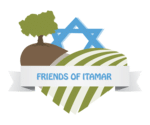Parshat Pekudey – 2011
Parshat Pekudey March 4 2011 “Thus all the work of the tabernacle of the tent of the meeting finished and the Children of Israel did according to all that the Lord commanded
Parshat Vayakhel – 2011
Parshat Vayakhel February 25 2011 Leah Goldsmith Parshat Vayakhel gives the details about how Hashem wants a holy sanctuary, a dwelling place below. This is actually the meeting pl
Parshat Terumah – 2011
Parshat Terumah February 4 2011 Leah Goldsmith Our home – our Temple Our holy Rabbis bring down an enlightenment pertaining to our founding fathers and the Holy Temple. Abraham
Parshat Beshalach – 2011
Parshat Beshalach January 14, 2011 Leah Goldsmith “And it came to pass that when Pharaoh had let the people go, that G-d led them not through the way of the land of the Pel
Parshat Bo – 2011
Parshat Bo January 7, 2011 Leah Goldsmith “And Egypt imposed itself upon the people, to QUICKLY send them out of the land”.(Shemot 12:39) “They shall inherit th
Vaera – 2010
Vaera December 31, 2010 Leah Goldsmith The Book of Berieshit closes with the climax of the Yosef saga, when he reveals himself to his family’s astonishment. It was really a
Ve’emunatcha Baleylot”- Mikeitz-Chanukah – 2010
“Ve’emunatcha Baleylot”- Mikeitz-Chanukah December 3, 2010 Leah Goldsmith The portions of Yosef come to light during the darkest days of the year always at the
Parshat Vayeshev – 2010
Parshat Vayeshev November 26 2010 Leah Goldsmith Dear readers- As I turned on my faucet to get ready for Shabbat – I really almost looked up into it to see if water would come
Parshat Vayishlach – 2010
Parshat Vayishlach November 19 2010 Leah Goldsmith Our Rabbis tell us, Ma’aseh avot siman lebanim- What happens to the fathers is a sign of what will happen to the future g
Parshat Chaye Sarah – 2010
Parshat Chaye Sarah October 30, 2010 Leah Goldsmith Chazal tell us that Yitzchak mourned for his mother three years. This is outstanding in that a person generally mourns for a s

